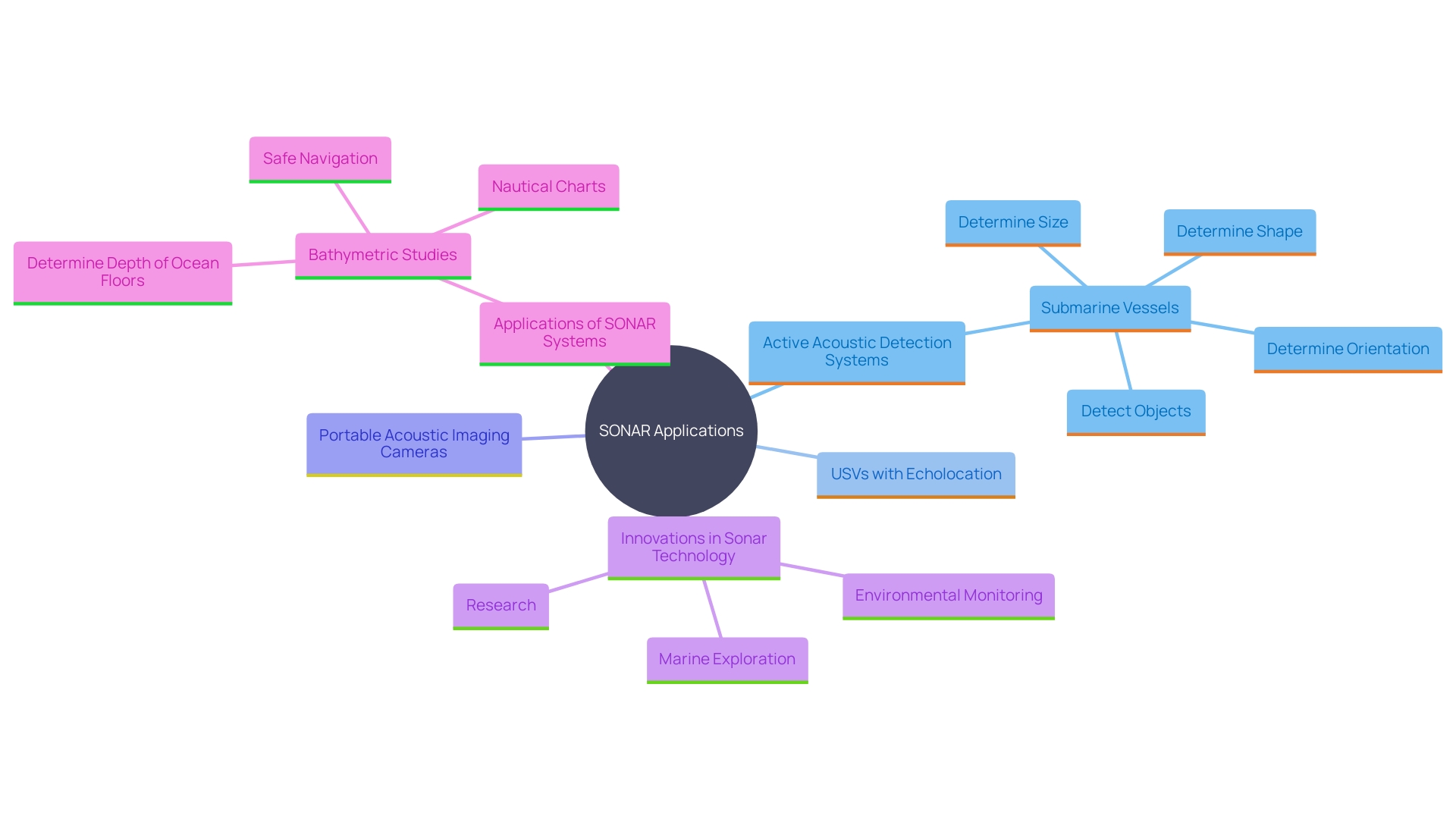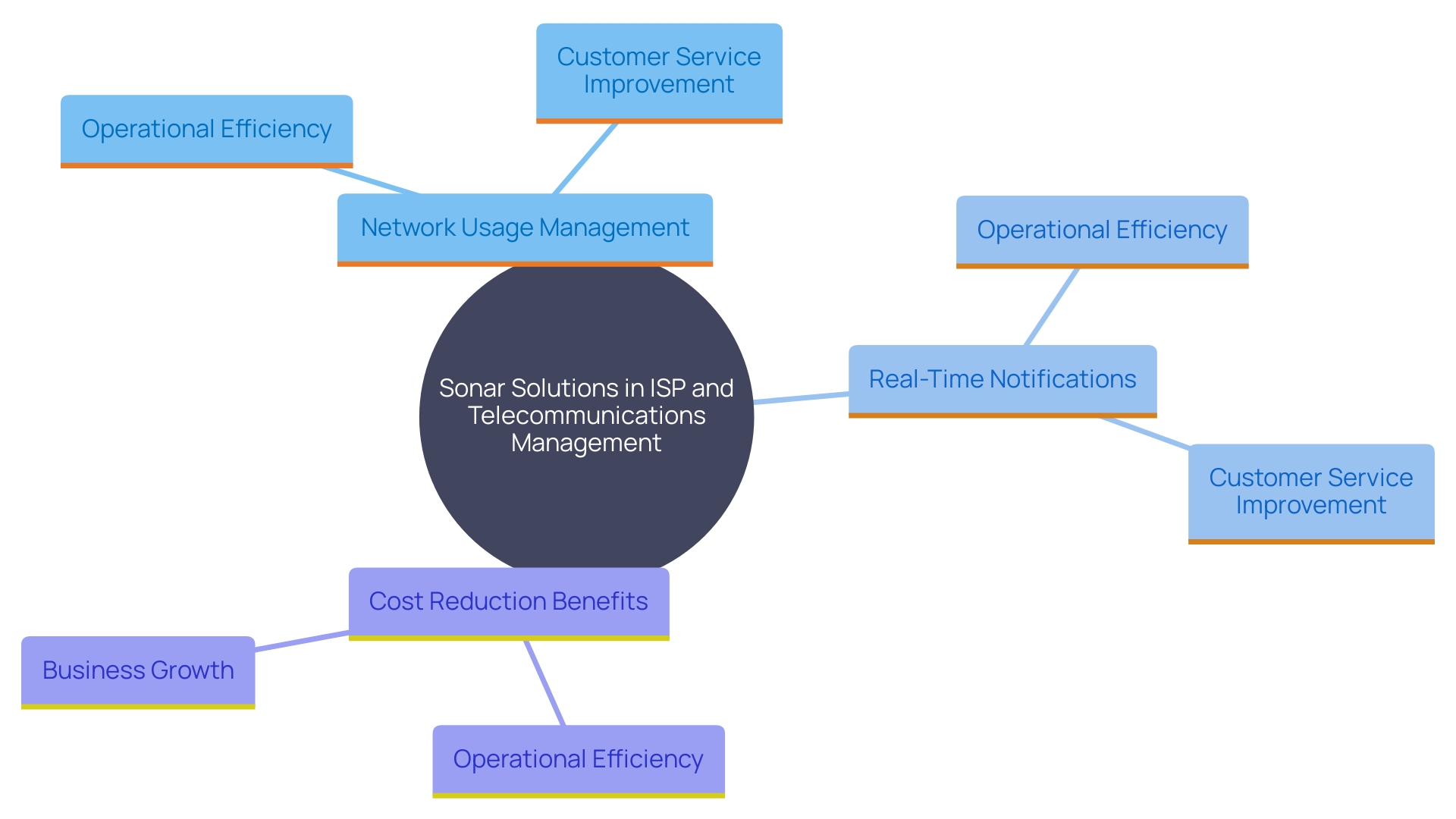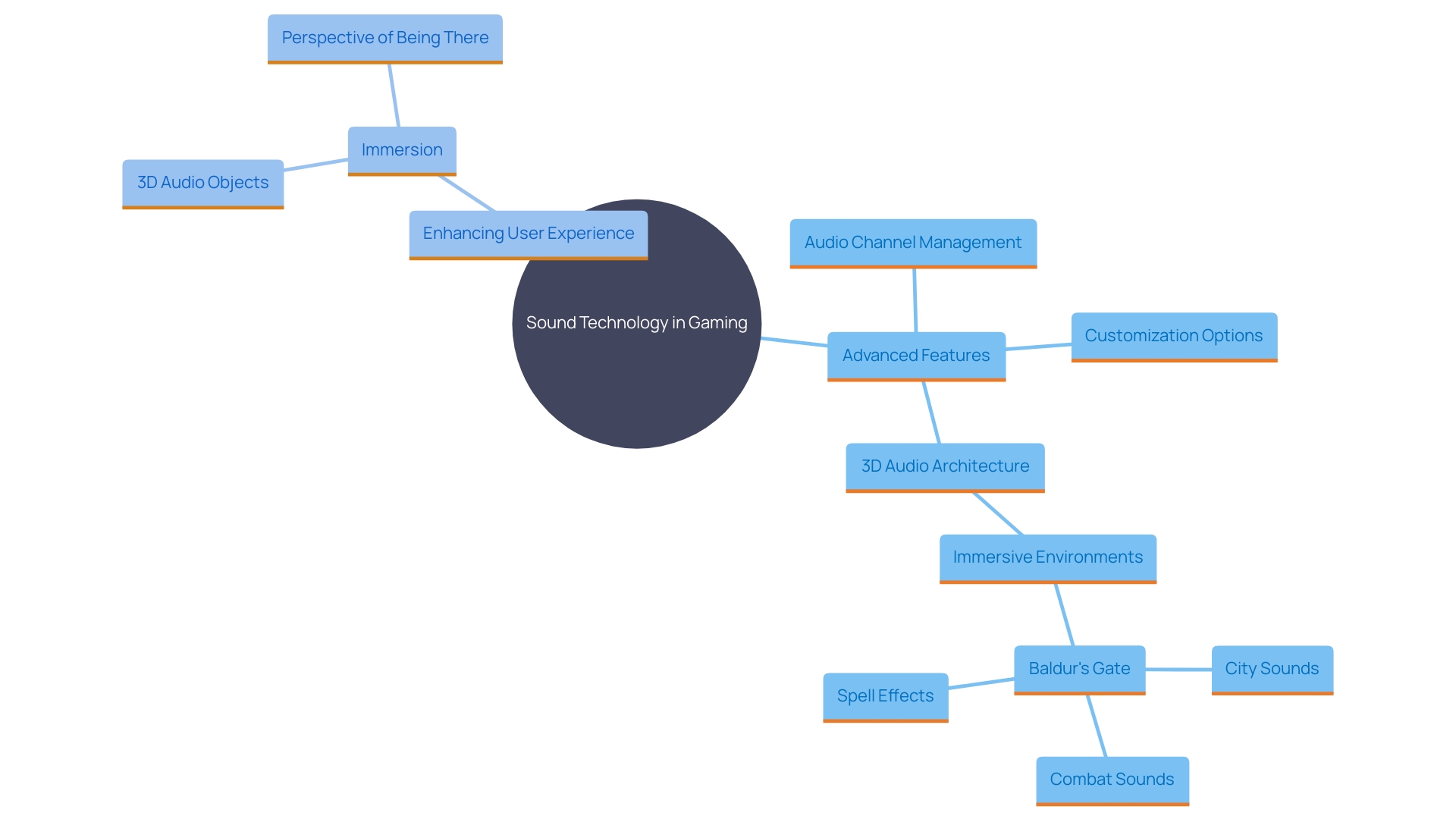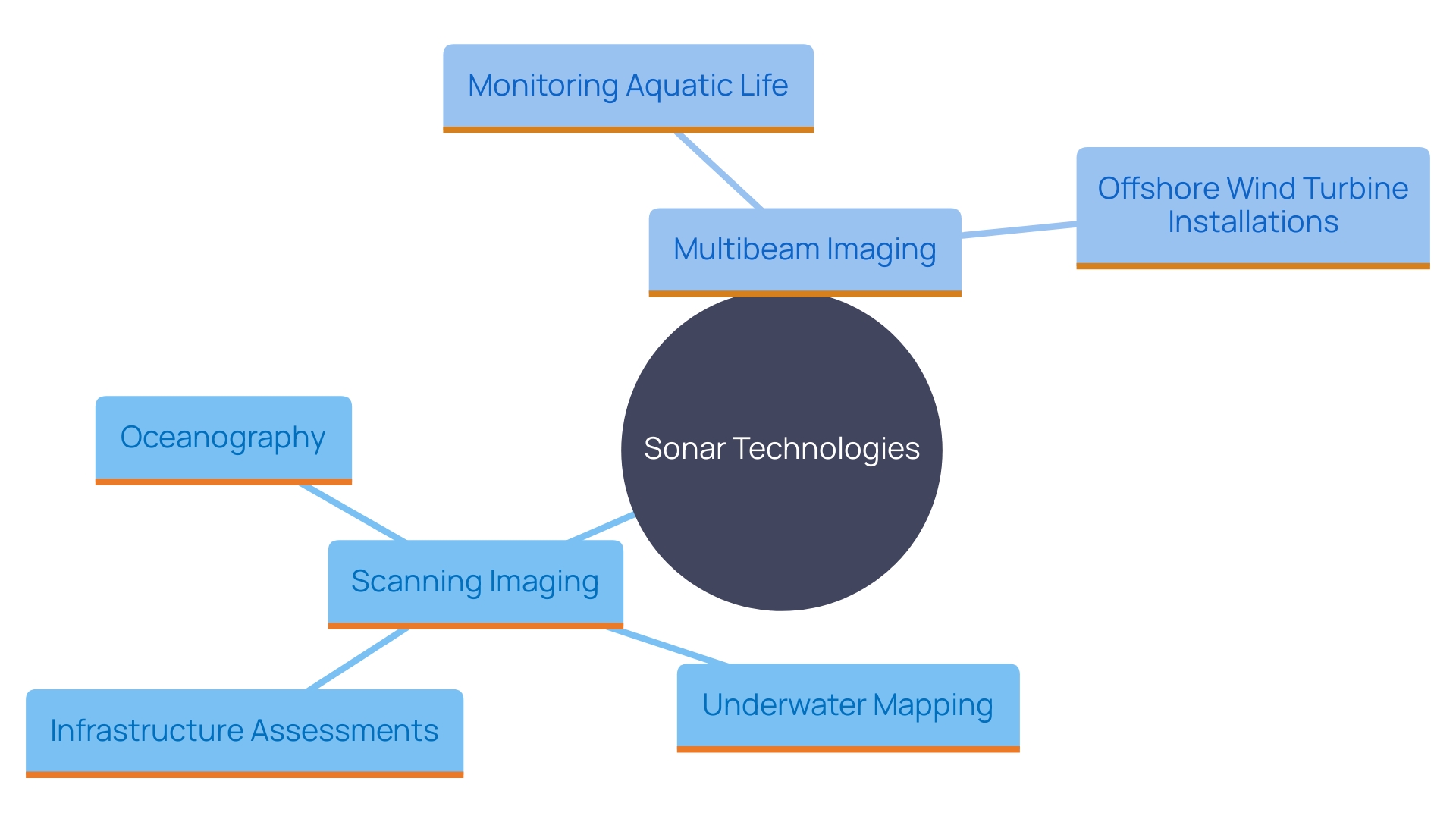Introduction
Sonar technology, a cornerstone in various industries, is revolutionizing the way we analyze and manage data, communicate, and explore our surroundings. From the depths of the ocean to the complexities of enterprise software, sonar tools provide unparalleled efficiency and precision. This article delves into the diverse applications of sonar software, highlighting its critical role in underwater exploration, telecommunications, audio and gaming, and enterprise software development.
Discover how these innovative solutions are enhancing productivity, streamlining operations, and paving the way for groundbreaking advancements across multiple sectors.
Types of Sonar Software
Sonar software is essential across various industries, offering specialized applications tailored to specific needs. These tools range in functionality and complexity, from data analysis and audio management to underwater exploration. For instance, active acoustic detection systems, which use a projector and receiver to determine the range, bearing, and relative motion of a target, are crucial in naval and research operations. Submarine vessels, for example, transmit acoustic energy to detect objects, allowing for detailed analysis of size, orientation, and shape.
The implementation of sound navigation technology extends beyond conventional uses. In marine exploration, USVs (Uncrewed Surface Vessels) fitted with echolocation instruments collect essential information from seabed nodes and profilers. A recent partnership with SeaTrac showed how incorporating acoustic communication technologies could improve information gathering in difficult environments such as the Gulf of Mexico. This project emphasizes the significance of choosing the appropriate acoustic application for particular tasks, guaranteeing precise and effective information gathering.
Moreover, the versatility of sonar devices is evident in their design. Many acoustic imaging cameras are portable and easy to deploy, making them suitable for various environments, from indoor spaces to open seas. These cameras come with software for data recording and analysis, enabling advanced techniques like source localization and customizable visualizations. Such tools are invaluable for researchers, engineers, and technicians working in noise control, environmental monitoring, and product development.
As the industry progresses, innovation keeps propelling the creation of specialized acoustic applications. Emerging technologies, such as DWE.ai's stereo vision collection system, promise to further improve underwater exploration and conservation. These advancements highlight the significance of comprehending various kinds of sonar applications to choose the appropriate resources for any project.

Sonar for ISPs and Telecommunications
Sonar solutions for internet service providers (ISPs) and telecommunications companies are indispensable for modern network management. These solutions offer a suite of features that streamline billing, operational tasks, and customer account management. By utilizing advanced tools such as CentralFlex, ISPs can manage their entire network's usage, connections, and user information through a user-friendly, easy-to-use dashboard. This comprehensive view is not only attractive but also removes complexity, making it accessible for anyone to interpret and act upon.
For instance, CentralFlex compiles insights, metrics, and visual graphs that highlight critical information, helping ISPs make informed decisions without getting bogged down by unnecessary details. This capability extends to monitoring service usage across various mediums such as cable, fiber, VoIP, and wireless systems. The platform's ability to drill down into every connection and session at a granular level ensures that all aspects of the network are optimized for efficiency.
In addition to operational efficiency, real-time notification capabilities are integrated into these solutions. Technicians receive specific job instructions delivered step-by-step via mobile applications, ensuring high-quality service regardless of their experience level. This feature also includes automated reminders and updates for customers, enhancing overall service reliability.
A notable case study demonstrated how a customer achieved a 64% cost reduction by transitioning to a managed service solution, highlighting the significant financial and operational benefits. This shift not only saved tens of thousands of dollars each month but also optimized their operations, enabling them to concentrate on essential business growth instead of handling various hardware and application providers.
Furthermore, innovative applications like Comarch’s OSS Mobile App have transformed field service management by delivering complex OSS solutions directly to technicians' mobile devices. This approach simplifies tasks and decreases the complexity of network management, ensuring that technicians have the correct information at the right time.
Overall, the integration of advanced Sonar solutions in the ISP and telecommunications industry exemplifies the transformative power of technology in enhancing network operations, customer service, and overall efficiency.

Sonar for Audio and Gaming
In the realm of audio and gaming, sound technology provides advanced features such as audio channel management and extensive customization options. These capabilities elevate the sound experience for users by enabling tailored audio settings that significantly enhance gameplay and overall satisfaction in interactive environments. The integration of 3D audio architecture allows users to immerse themselves in dynamic soundscapes, creating a more realistic and engaging experience. For example, in complex gaming environments like Baldur’s Gate, the spatial audio can bring to life the bustling city sounds and the intensity of combat, making players feel truly present in the game. Additionally, with advancements like Audio Radar, showcased at CES 2024, gaming is becoming increasingly inclusive and immersive, demonstrating how innovative audio solutions are shaping the future of interactive entertainment.

Sonar for Underwater Exploration
Sonar technologies are instrumental in underwater exploration, leveraging advanced features like scanning imaging and multibeam imaging. These applications are critical in hydrographic surveys, oceanography, and underwater mapping, providing researchers and professionals with detailed data about marine environments. Submarines and remotely operated vehicles (ROVs) utilize acoustic energy to detect objects by measuring the time delay of returning echoes. This technology has evolved to determine the size, orientation, and shape of objects with remarkable precision.
Multibeam imaging devices utilize several sound beams to generate detailed visuals of underwater structures, assisting in tasks like infrastructure evaluations of bridge foundations, dock supports, and dams, where visual assessments are difficult. These systems help inspectors identify defects and monitor changes over time. Furthermore, robust acoustic systems play a crucial role in offshore wind turbine installations, ensuring the secure placement of turbine foundations.
In ocean science, acoustic technology supports the monitoring of aquatic life and environmental conditions, proving invaluable for academic research and underwater discovery. The incorporation of sound navigation and ranging devices into vessels or self-directed underwater craft facilitates detailed seafloor mapping, converting millions of data points into visual representations of the seafloor. These capabilities foster innovation in marine exploration, conservation, and industry, driving forward our understanding of underwater environments.

Sonar for Enterprise Software Development
In the domain of business application development, monitoring instruments are essential for upholding elevated benchmarks of code quality and security. They emphasize clean code through continuous inspection, significantly enhancing the robustness and maintainability of applications. By tackling crucial challenges like bugs and security weaknesses, these instruments assist in averting expensive and time-intensive complications that might result in serious security violations and monetary losses.
For instance, M&T Bank, a leading U.S.-based commercial bank, faced the challenge of implementing clean code standards across its development team to ensure the maintainability and performance of its software. By utilizing acoustic devices, they were able to meet strict regulatory standards and safeguard sensitive information, ultimately aiding their digital transformation initiatives.
Sonar resources such as SonarCloud provide comprehensive reports on particular problems, including impacted lines of code and recommendations for solutions. Following these recommendations and continuously re-running analyses ensures that the codebase remains compliant and secure. This proactive approach not only mitigates risks but also aligns with industry best practices, making sonar tools a critical asset for any enterprise aiming to streamline its software development processes.
Conclusion
The exploration of sonar technology across various industries reveals its transformative impact on data analysis, communication, and operational efficiency. From underwater exploration to telecommunications, and even in audio and gaming, sonar software presents tailored solutions that address specific challenges and enhance productivity. The diverse applications of sonar tools demonstrate their versatility, enabling organizations to optimize processes, improve service delivery, and drive innovation.
In the telecommunications sector, sonar solutions streamline operations for ISPs, offering intuitive interfaces that simplify complex network management tasks. The integration of advanced features not only enhances operational efficiency but also significantly reduces costs, allowing companies to focus on growth. Similarly, in the realm of audio and gaming, sonar technology elevates user experiences through immersive soundscapes and customizable settings, highlighting its role in enhancing engagement and satisfaction.
Furthermore, sonar's crucial role in underwater exploration and enterprise software development underscores its importance in both environmental conservation and code quality assurance. By leveraging sonar tools, organizations can gather critical data, ensure compliance, and maintain high standards in their operations. As industries continue to evolve, the ongoing advancements in sonar technology will undoubtedly pave the way for further innovations, reinforcing its status as an essential tool for achieving maximum efficiency and productivity across multiple sectors.
Frequently Asked Questions
What is sonar software and its primary purpose?
Sonar software is essential across various industries, providing specialized applications designed for specific needs such as data analysis, audio management, and underwater exploration.
How does sonar technology function in naval and research operations?
Active acoustic detection systems use a projector and receiver to determine the range, bearing, and relative motion of targets, which is crucial for operations in naval and research settings. Submarines, for instance, utilize acoustic energy to detect objects, allowing for detailed analysis of their size, orientation, and shape.
What role do Uncrewed Surface Vessels (USVs) play in marine exploration?
USVs equipped with echolocation instruments gather essential data from seabed nodes and profilers, improving information collection in challenging environments, such as the Gulf of Mexico.
How versatile are sonar devices in terms of deployment?
Sonar devices, including portable acoustic imaging cameras, are designed for various environments, from indoor settings to open seas. These cameras often come with software for data recording and analysis, enabling advanced techniques for researchers and engineers.
What are some emerging technologies in sonar applications?
Innovative technologies, such as DWE.ai's stereo vision collection system, are enhancing underwater exploration and conservation, demonstrating the evolution of specialized sonar applications.
How do sonar solutions benefit internet service providers (ISPs) and telecommunications companies?
Sonar solutions streamline network management by offering features like billing, operational task management, and customer account oversight, using user-friendly dashboards for efficiency.
Can you provide an example of how sonar solutions improve operational efficiency for ISPs?
An example is CentralFlex, which compiles insights and metrics in a visual format, aiding ISPs in making informed decisions and optimizing network usage across various mediums.
What is the significance of real-time notifications in sonar solutions for ISPs?
Real-time notifications allow technicians to receive specific job instructions via mobile applications, enhancing service quality and ensuring that customers receive timely updates.
How do sound technologies enhance the gaming experience?
Sound technology provides features like audio channel management and 3D audio architecture, creating immersive and customizable soundscapes that significantly enhance gameplay in interactive environments.
In what ways are sonar technologies used for underwater exploration?
Sonar technologies, including scanning and multibeam imaging, are vital for hydrographic surveys and underwater mapping, providing detailed data about marine environments and assisting in infrastructure evaluations.
What are the benefits of monitoring instruments in business application development?
Monitoring instruments uphold high standards of code quality and security by emphasizing clean code through continuous inspection, which mitigates risks associated with bugs and security vulnerabilities.
How do companies like M&T Bank utilize sonar tools in their development process?
M&T Bank uses sonar tools to implement clean code standards, ensuring the maintainability and performance of their software while complying with regulatory standards and safeguarding sensitive information.
What resources do sonar tools like SonarCloud provide for developers?
Sonar resources offer comprehensive reports on code issues, including affected lines and recommendations for solutions, helping developers maintain compliance and enhance code security.
Why is it important to choose the right acoustic application?
Selecting the appropriate acoustic application is crucial for ensuring precise and effective information gathering, particularly in specialized and challenging environments.




